How to Break Down Profit of Building Construction Project Ground Up
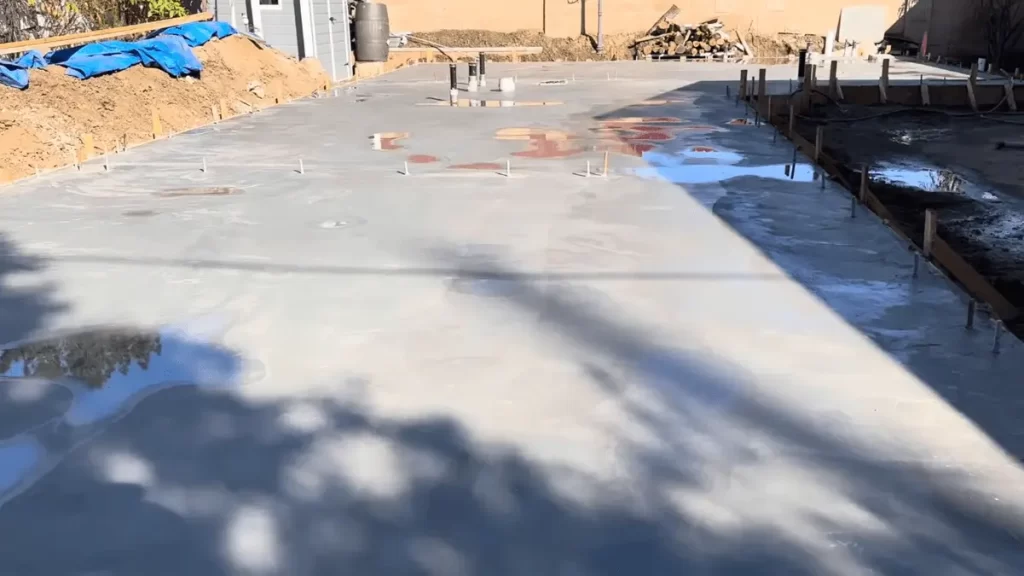

How to Break Down Profit of Building Construction Project Ground Up
As with any business project, a construction project has to be planned thoroughly, especially with regards to finances, revenue estimation and profit projection. Profit projection on construction projects is much more complicated. There are various financial, structural, logistic, and economic aspects to consider. It is important to analyze project’s expenses and sources of revenue comprehensively and qualitatively. Proper estimation of direct and indirect costs, financing expenses, contingencies, and overheads is key to ensuring profit. The construction revenue model based on terms of contract performance, property sales, or rental income also contributes to profit vastly.
Understanding the Basics of Construction Revenue
Profit maximization in a construction project is defined as the difference in total revenue and expenditure. The high level formula is depicted below:
Profit = Revenue – Total Costs
Nonetheless, this is merely a high-level number of calculations. Profit measurement and management is fundamentally an analysis on the cost structure. Construction projects break down costs into direct costs, indirect costs, financing costs, general administrative expenses, and contingency expenses. All such costs and expenditures must be tracked and managed to guarantee that the project meets budgetary expectations and enables the anticipated profit noted.
Analyzing the Expenses of the Project
One of the most important elements when trying to achieve profit in construction is the comprehension of the different cost parts. In a construction project, direct (or hard) costs encompass all expenses associated with the actual construction of the building which include materials, labor, equipment, and site work. Labor and material expenses are subject to change due to market conditions, while costs regarding subcontracted work, wages, and productivity have an impact on labor. Equipment costs, whether pertaining to rental or purchase of machinery also fall within this category. As direct costs constitute approximately 60 to 70 percent of the total cost, any mistakes in managing these expenses directly impacts the profit margins.
As for indirect (or soft) costs, they encompass all expenses encountered as necessary for the project yet do not physically pertain to the construction. These costs comprise the architectural and engineering g fees, payment of legal documents, permits, environmental studies, and project management. Soft costs usually spend about 20 to 30 percent out of the total budget and should be monitored more thoroughly to avoid extra expenses.
There is a certain amount of risk for any construction project, which is why contingency funds are imperative to set aside. Unforeseen expenditures such as increases in the prices of materials, adverse weather affecting construction progress, or changes in legal requirements can threaten budgets. It is wise to set aside a contingency reserve of 5% to 10% of the total project cost for such unforeseen risks. If the project is completed on time with proper management, and the contingency funds are not needed, the profits are better than expected.
Read More: Is Cash Theft Covered Under Construction Site Liability Insurance?
Estimating Revenue from the Construction Project
In construction, as in any other business, revenue is generated from different activities based on the business model adopted. In the case of fixed price contracts, the contractor undertakes the responsibility of finishing the project at a pre-agreed price. In these types of contracts, profitability depends on cost management. If the actual cost is more than the stipulated amount under the contract, the contractor will incur a loss. On the other hand reimbursement contracts known as cost-plus contracts allow the recovery of the cost plus an allowance for overheads and profit which reduces financial risk but increases total revenue exposure to costs incurred.
When developers construct a project for the purposes of selling or leasing the property, revenue is recognized only upon completion of the project. These types of construction projects are profitable depending on the time the market is performing, the value of the property and the demand for it. If the construction cost is controlled effectively and the selling price is high, there is likelihood of substantial profit margin. However, there is no doubt that the variability in the real estate market is likely to have an adverse impact on revenue expectations which underscores the importance of precise forecasting.
Understanding Gross Profit Versus Net Profit
Profit for a construction undertaking is the total revenue obtained after direct expenses are charged. Suppose a construction undertaking has revenue of $10 million and direct expenses of $7 million. In this case, gross profit would amount to $3 million. It is worth noting, however, that this figure does not constitute the net profit from the undertaking. Net profit is derived after taking into account other expenses such as overhead charge, cost of funds, and statutory tax. If gross profit stands at $3 million but overhead cost plus financing cost and tax cost adds up to $1.1 million, then net profit would be 1.9 million. The ratio of Net Profit Margin is computed as (Net Profit / Revenue) * 100. In this case, it will be 19 percent. Recognizing and differentiating gross profit and net profit is critical to performing accurate financial assessment and decision-making.
Profits Maximizing Strategy for Construction Projects
In construction projects, profitability is achieved by proper cost estimation and efficient project management scheduling. Good cost planning and budgeting avoid cost overruns while optimizing labor and avoiding delays maximizes profit. Negotiate for lower prices with suppliers and subcontractors. There is also reduced expenditure through improved technology and the use of construction management software.
Conclusion
In any construction project, profit is calculated on a heuristic basis. It can be understood with an in-depth examination of the costs, revenue streams, and financial risks that accompany the project. In a construction project, profit is understood as a profit margin, which is defined by expenses for direct and indirect costs, capital financing, overhead, and other contingency expenditures. It is equally important for contractors, developers, and investors to comprehend how different revenue models affect profit margins. Practitioners in the construction field may increase profit margins and ensure favorable financial outcomes by reducing costs, increasing efficacy, and expanding revenue streams. This multifaceted approach constitutes strategic spending and financial planning that enables long profiting margins to be sustained over a long period of time in the competitive field of construction.
Is Cash Theft Covered Under Construction Site Liability Insurance?


Is Cash Theft Covered Under Construction Site Liability Insurance?
In terms of constructing buildings, there are several forms of monetary losses that can be sustained, like cash theft, vandalism, disputes, and even a robbery. The characteristic features of construction projects cause business owners, as well as contractors, to purchase varying types of insurance policies to protect their assets or minimize monetary losses. However, one question perplexes many construction business owners – does construction site liability insurance cover cash theft? Most of them presume that their general liability coverage will pay for money that was taken away unjustly, but this is commonly not true. It’s crucial to comprehend the shortcomings of liability insurance and find other possible ways to receive coverage.
A Primer on Construction Site Liability Insurance
Construction site liability insurance is designed for the construction industry and falls under general liability insurance. It protects construction businesses from incurring losses from injuries to third parties, damages to other’s property, and legal actions taken against the business. It is essential for contractors and construction companies since it helps mitigate expenses linked to accidents, lawsuits, and damages during the construction works.
The Most Common Types Of Theft and Crime Mitigation At A Construction Site
Thefts is a huge problem for most construction businesses as the construction sites themselves tend to have valuable equipment, material and even cash. Other crime done at the sites includes employee theft or dishonesty of any type, each of them has its own distinctions almost equal to cash. Anything that has value, including construction machinery and tools that are expensive and often difficult to replace, are sometimes stolen. Material theft is another significant issue, because items like copper wire, lumber, and cement can be sold for great prices on the black market. Employees and even subcontractors sometimes would steal materials or equipment for their own use.
Does Construction Site Liability Insurance Include Coverage for Cash Theft?
In a nutshell, the answer is no. Construction site liability insurance isn’t meant to cover losses including cash theft. This insurance type focuses on bodily injury claims and property damage by third parties. Liability insurance covers businesses that get sued due to injuries from people who visit the construction site, or property damage caused by construction work, but does not cover losses resulting from theft.
The primary reason there is no coverage for cash theft under liability insurance is that it deals with legal liability and not direct property loss. Cash is viewed as a high-risk asset because it can easily get stolen and is very hard to trace back.
Polices Which Protect From Cash Theft For Business Insurance
Since cash theft is not covered by general liability insurance, construction companies need to think about keeping different types of insurance to cover their potential losses. One of the most relevant policies for this situation is crime insurance that protects businesses against losses resulting from thefts, robberies, and frauds. For example, a crime insurance policy will cover such things like the stolen cash in the business, dishonesty of employees, forgery, and even cybercrimes. This insurance is most suited for businesses that deal with cash and desire prtection from both internal and external theft.
Builder’s risk is an example of policies peculiar to the construction industry. This, however, like all other covers does not extend to theft of cash and focuses on the protection of construction materials, tools, and equipment within the site. Although this policy covers many useful assets on site, it does not protect against the financial losses obtained from cash theft. Because of this, it is not advisable to depend solely on builder’s risk insurance policy.
Dishonesty coverage is a specialized policy that may be useful to construction companies, especially if they fear internal theft. This insurance policy pays for losses incurred as a result of employees stealing money, materials, or company property. It tends to help construction companies that keep cash in hand, or have employees who work with cash on a daily basis.
You may love to read our post on: Why Do Construction Engineers Survey Land?
How Can You Secure Your Construction Site From Theft
While making sure you have the right policy is important, the ideal way to secure a construction site from theft is prevention. Taking adequate measures can help prevent cash theft, and other crimes. Making security measures more rigorous can be done by placing CCTV cameras and alarm systems on the premises. Surveillance cameras generally discourage thieves from trying to break in, and alarm systems enable law enforcement agencies to respond rapidly after being notified.
Construction firms need to adopt stringent rules related to cash security in order to eliminate the chances of theft. Robbery is less likely to occur when cashless methods like electronic payments are preferred over cash. Cash that needs to be processed on the site should be stored in a safe that is locked and restricts who it can be accessed by. Only trustworthy employees should be assigned cash handling responsibilities, and it is necessary to perform regular audits on the cash to confirm the actual amounts in the cash register.
What You Should Do Following a Cash Theft at a Construction Site
When a construction site is subjected to cash theft, prompt and rational action should be taken in order to mitigate the damage and enhance security particulars for the future. As soon as possible, call the police to report the crime. Having a filed police report allows the crime to be documented, increasing the chances of recovering the stolen funds. The owner of the business will also need to notify their insurance company to see if any policies offered, such as crime or business property insurance, can mitigate the damages suffered.
Liability insurance on construction sites offers necessary coverage for third-party injuries and property damage; however, it unfortunately excludes cash theft and theft. Because cash losses often exceed what most businesses can afford to write-off, construction business owners should adopt crime insurance policies alongside traditional business property or employee dishonesty coverage. Furthermore, surveillance cameras, access restrictions, and cashless payment systems can mitigate the cash loss problem.
Why Do Construction Engineers Survey Land?


Do Construction Engineers Survey Land?
Land Surveys highlight property lines, contours, and other relevant site features that are vital for the efficient planning and execution of construction works. Accordingly, it signifies the question: Do construction engineers carry out land survey work?
Besides planning and designing a particular construction project, construction engineers are responsible for supervising its execution. However, land surveying is performed by qualified land surveyors whose trade is measuring and mapping land. While construction engineers do not conduct surveys, they need them to be able to perform their duties accurately. They utilize survey findings to outline the scope of work on site clearing, foundation excavation, and orientation of the superstructure, in order to avoid building on fill.
The Role of Construction Engineers in Land Surveying
Construction engineers specialize in the design and management of the construction of new or existing buildings, roads, and bridges. Their competencies are limited to the analysis of the structural, material, and execution calculations of the project but not to the plan of the land. But, construction engineers are depending on land surveys to make site development decisions.
What Is Land Surveying?
Land surveying refers to the act of measuring the land and its features as well as mapping these features with great detail including the boundaries, elevations, and any other details of the terrain. Land surveyors use high quality equipment like GPS devices, total stations drones and others to take comprehensive measurements required.
Who Conducts Land Surveys?
Professional Land Surveyors
With regard to legally sanctioned resource estimation, a land surveyor is expected to be licensed, for mapping purposes. A land surveyor is an expert in the measurement and mapping of a parcel of land as it pertains to properties. So that estimates can be validated legally, such professionals must go through a number of training programs and certification steps.
Surveyors collect data related to the land using theodolites, total stations, drones, GPS tools, and other sophisticated technologies. Their work is prepared in the form of maps and reports which are assets to property owners, engineers, and contractors, as they work as official documents outlining the findings.
Construction Engineers and Surveying
A professional surveyor still needs to be engaged even in cases where construction engineers are involved, however, they may do some scans of the area in the absence of a surveyor. These engineers study survey reports and maps and try to adapt the planned engineering works to the contour of the land.
Construction companies that are big may have a civil engineer on staff and such engineers may do some basic surveying work like set the site and elevation, however, a certified land measurer is needed if legal and formal measures of the boundary markings are required.
How Construction Engineers Utilize Land Survey Information
Construction engineers rely on land surveys to make sure that the projects are carried out as they are planned at all times. Here is how this data is useful in construction projects:
1. Site Planning and Design
With the survey data, engineers comprehend the shape, elevation, and even the soil features of the land. This information allows them to create an optimal arrangement for the positioning of buildings, roads and other pieces of infrastructure. Engineers have to modify their designs in case there are steep slopes or unstable soil at a location.
2. Foundation and Structural Integrity
Constructing a structure without a proper foundation is as useful as molding clay without a pot. Proper land surveys facilitate engineers in understanding what type of foundation would be ideal with what soil, groundwater and other elevation features. This avoids failing structures while maintaining a sound and stable base for the long term in the region.
3. Legal Compliance and Boundary Verification
Land surveyors divide the land into different properties and easements which construction engineers use to make sure that the buildings do not trespass into neighboring lands or breach zoning laws. This eliminates legal problems and guarantees the compliance of the construction with the municipal laws.
4. Planning of Roads and Their Adjacent Drains
For the construction of new roadways, pathways, and drainage systems, survey data is crucial. Flood and erosion prevention is vital and engineers analyze maps to establish where the water will best be drained.
5. Site Layout and Construction Management
As a project progresses into the construction phase, engineers utilize land surveys to ensure that construction is compliant to the design plans. Surveyors play a critical role as they must coordinate the changing of certain heights, positioning of certain components, and the restricting of the area from which the work is done.
Do Construction Engineers Ever Perform Land Surveys?
Construction engineers are not trained to perform proper land surveys, although some engineers may possess one or two skill sets of surveying, thus being able to do minor survey work in the field which may include:
- Monitoring elevation and measurement outlines of a building site as work progresses.
- Operating basic survey apparatus, such as leveling instruments.
- Relative position of boundary or limits of construction and building works.
A legal boundary survey must be completed by a licensed land surveyor. For any engineering project, surveyors will always be relied on to provide accurate and official documentation of the measurements for the site before any plans are executed.
You may find this informational: Can Land Be Used as Equity in a Construction Loan?
The Difference Between Land Surveyors and Construction Engineers
| Aspect | Land Surveyor | Construction Engineer |
| Primary Role | Measures and maps land. | Designs and oversees construction projects. |
| Responsibilities | Establishes property boundaries, topography, and elevation. | Uses survey data for planning and execution. |
| Legal Authority | Provides legally binding survey reports. | Follows survey data but does not conduct official surveys. |
| Tools Used | GPS, total stations, theodolites, drones. | CAD software, construction management tools. |
| Final Output | Survey maps, property boundary reports. | Engineering plans, structural blueprints. |
So, does construction engineering involve land surveying? The simple answer is no, not in a formal sense. While construction engineers depend heavily on surveys during the planning and execution phases of a project, the actual land surveys are the work of licensed land surveyors.
Nonetheless, construction engineers, as well as land surveyors, work together as a team. Engineers need survey data for designing structures that are safe, efficient, and compliant so that everything is in order from the ground up. Sometimes, engineers do some surveying work to check whether the conditions at the site match what was expected, but for reliable measurements and legal documents, land surveyors are necessary.
Can Land Be Used as Equity in a Construction Loan?


Can Land Be Used As Equity In A Construction Loan?
For landowners looking to construct a residential or commercial property, one common question is: can land be used as equity in a construction loan? The answer is yes. A good number of lenders permit borrowers to incorporate land into the necessary equity for the loan which lowers, or in some cases, eliminates the required cash down payment. However, using land as equity is not as simple as it sounds. To begin with, there are extensive requirements to meet, particularly regarding the ownership, value of the land, and the lender’s rules.
Interpreting the Equity in Construction Loans
Equity refers to the value of an asset that an individual fully possesses. In the context of real estate, equity is computed by subtracting any pending financial obligations from the current market value of the property. To illustrate, if you possess land valued at $100,000 and have an outstanding loan of $20,000, your equity would be $80,000. Lenders take this equity into consideration when calculating the possible loan amount, they are ready to offer you for your construction work.
Is A Construction Loan Possible with Land as Equity?
Equity can be in the form of land for a construction loan, but lenders are strict on certain criteria. To begin with, the land should either be free of ownership claims or have a considerable amount of equity if there already exists a loan on it. Furthermore, lenders will evaluate the land for its appraisal value because that is what determines its market value.
To What Extent Does Land Yield Equity?
An estimation which lenders usually consider when determining the coverage of an existing loan with the available Equity’s is known as Loan to Value ratio (LTV). One can calculate it using the formula:
LTV = Loan Amount ÷ Appraised Property Value
As an example, LTV can be illustrated through the following problem; if your land is worth $100,000 and you desire a loan of $300,000, the computation would be as follows:
$300,000 ÷ ($100,000 land + $300,000 construction) = 75% LTV
Most lenders do not like LTV ratios to be over 80%, in which case the more valuable your land is, the less additional equity you need to procure.
The appraisal process is vital in establishing the worth of the land. Various factors such as the recent sale prices of comparably located properties, the condition of the land, zoning laws, as well as the presence or absence of roads and other utilities are examined by lenders. Improved land tends to have a higher value than undeveloped land. This means land with utilities, roads and proper zoning is much more valuable than the counterpart.
Types of Land with Equity
Not every parcel of land is able to qualify equally for equity lending purposes. The type as well as condition of the land determines how much equity it can provide.
Lacking roads, utilities, and zoning approval, raw land is considered to be riskier by lenders, since its development is likely to incur considerable expenses. Contrary to raw land, improved land, typically more acceptable as equity, is accessed with approved roads, utilities, and zoning.
Other than estate features, lenders incorporate the local zoning and land use restrictions too. Should the land be insufficiently zoned to commercial or residential areas, additional approvals that may slow down the loan process will be needed. Having the sales permits and zones allow the lenders to consider the equity of the land significantly higher.
How to Use Land as Equity in a Construction Loan
Unlocking a construction loan means you need to take preparatory steps in case you plan on utilizing your land as equity.
The first step is to check whether your ownership of the land is undisputed; otherwise, lenders will not take land with title problems or clashes over ownership. In the presence of an existing loan for the land, the lender will determine what portion of the equity the borrower holds by checking the outstanding balance.
You will also need to get the land appraised. In order to obtain a loan, the lender will need to know how much money they can provide the borrower along with valuing the land, so it’s mandatory to have the land appraised officially by a professional.
Also, you will need to check what the zoning parameters are along with permits. This may be especially important if additional approvals must be granted before the ability to use the land as equity is permitted. Remember to include documentation as well which are the tax files, land deed, and any loan statements out there that are available. These documents aid in making the application process smooth and swift.
Advantages of Employing Land as Equity for Loan Equity
An important benefit of using land as equity is reduced cash down payment requirement. This is advantageous to a landowner who has no cash on hand. Equity in land allows borrowers to fulfill the lender’s requirements without using savings.
Equity in land also increases the capacity to borrow, which is called borrowing power. The more equity that you put in the loan, the better the loan terms that can be obtained, such as lower interest rates or greater chances of approval. Higher equity borrowers are viewed as lower risk, which makes lenders more willing to grant favorable loan terms.
Read More: What Are the Magnetic on A Construction Truck?
Equity Challenges
Despite the benefits, there are some challenges that need to be addressed. One already mentioned concern is the undervaluation of land. If the appraisal returns your land’s value much lower than expected, you may be required to provide extra cash or Equity. This is frustrating for borrowers expecting to meet their equity requirements using only land and no cash.
Is land equity permitted on a construction loan? Yes, but it is a lengthy process needing detailed planning and lender consent. For landowners, it is a powerful asset to have to help with lowering cash deposits and increasing the loan amount. The only issue is the land has to be correctly appraised, appropriately zoned, and not under serious disputes of ownership.
What Are the Magnetic on A Construction Truck?
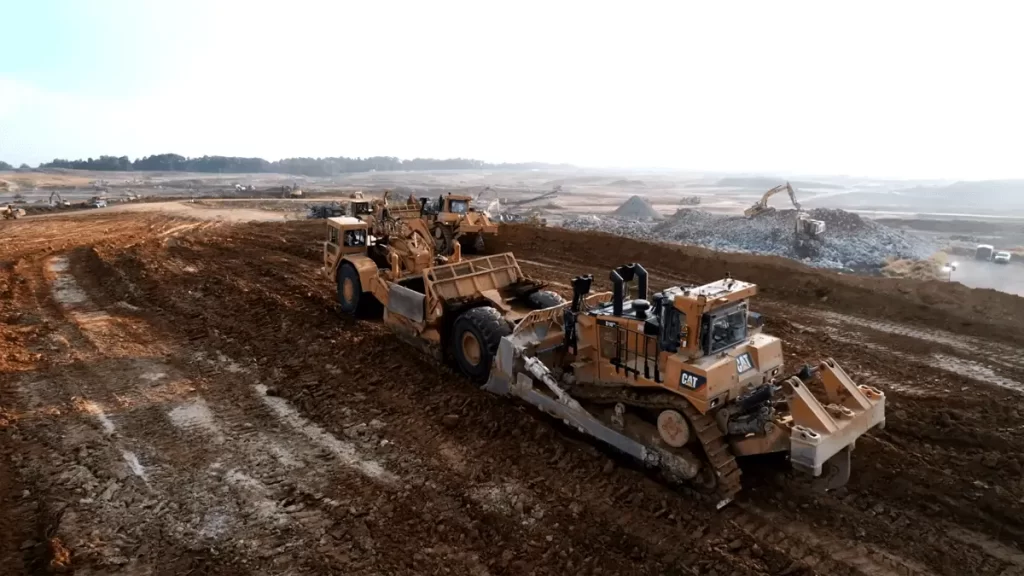

What Are the Magnetic on A Construction Truck
An example of a truck that uses a magnet is a construction truck. Construction work is heavy-duty work that requires the use of construction trucks and other heavy-duty machine tools. The use of magnetic elements plays a vital role in making the work done more efficiently and also in a safer manner. In this manual we are going to discuss what the elements of a magnetic are on a mobile construction truck, how the parts work, and why it is so important in construction projects. In this article we will explain what are the magnetic on a construction truck and you will find complete information.
Magnetic components in construction trucks have already been played very important role in these days because they can help in maintaining not only the projected bottom line of expenses, but also indirectly expedite overall site management. In a construction site that is too full of metallic scattered parts, these features make sure that a particular area is restfully plastid and even safer. Another reason why construction companies are continuously looking for better ways to improve these vehicles is the use of technology which is magnetically enhanced, and that improves durability and efficiency of this truck.
The fueling of pegs in construction trucks is not only easier for rotation, but also for accidents and failure of apparatus ratio breakdown. The estimate of these parts is different, but they do eliminate safety and injury, and damage insufficient time-induced workers that rush to complete the tasks and only make the missing deadlines for entire projects programs. Besides, securing those positions can assist the magnets for tools for easy access when everyone would want to obtain the right tools and gears.
Understanding What Are The Magnetic On A Construction Truck
The use of magnetic components on a construction truck help in carrying out several functions, such as holding tools and even lifting heavy metallic debris. These magnets help improve a job site’s safety, decrease the amount of manual work needed, and increase productivity. The use of magnetic technology is important in construction vehicles, from cranes to dump trucks to excavators.
Varieties of Magnets utilized on a Construction Truck
A construction truck’s primary magnetic-part is the magnetic sweeper. This attachment is utilized on a vehicle to capture nails, screws, and other metallic objects from an area after an construction job is finished to make it safe. Another frequent application is holding tools magnetically, which allows the workers to keep their essential tools on the truck, making them easily accessible. Also popular are magnetic lifters, which allow trucks to lift heavy objects made of metal and carry them without the use of additional manpower.
Another important component of construction trucks are the magnetic signs. These signs which are functional as both safety banners and company advertisements serve as essential information and also as compliance signs. Because of the various requirements of different types of projects, changing these signs is much easier than other types. Moreover, construction trucks are often mounted with electric magnets for the handling of steel beams, pipes, and other large sized metal parts forming blocks in the structure’s infrastructure.
Advantages of using Magnetic on a Construction Truck
There are many pros related to the use of magnetic components on a construction truck. One of the primary benefits is improved safety features. Magnetic sweepers eliminate metal debris from work places which reduce the risk of tire punctures or injuries. Also, there is less physical strain and accidents at the workplace due to less manual lifting of heavy metal parts due to the use of magnetic lifters. Another key advantage is better efficiency. Workers are able to work quicker and better with the use of magnetic tool holders and attachments, because nowadays time is extremely important.
Also, another great benefit which magnetic features for construction trucks offer is making the trucks cost effective. By using these magnetic solutions, companies save a lot of money which would have otherwise been wasted on manual labor, equipment damage and workplace injuries. Magnetic signs are additionally non-permanent and durable so they don’t require paint or decals. Magnetic technology makes it smoother towards achieving better operations and workflow which is why construction trucks undoubtedly benefit from it.
How To Keep Magnetic Working On A Construction Truck
The magnetic parts of a construction truck, like any other piece of machinery, need special care if they are to last long and work as expected. Regular maintenance involves cleaning the sweeping magnets on a regular basis to avoid debris buildup. Regular inspections and tightening of magnetic tool holders should also be done to ensure they are strong enough to hold tools and other implements safely. Lastly, checking the electromagnetic attachments carefully for any signs of damage can help minimize failures during operations.
Shielding the magnetic signs from extreme weather is another maintenance step everyone should consider. This shields the sign from dust, heavy rain, and extreme temperature which helps prolong its lifespan. Good handling of these construction truck mounted permanent magnets, lifters, and other attachments helps ensure that the trucks work optimally.
Also Read: What Is Concrete Testing in Construction?
Conclusion
Knowing what are the magnetic on a construction truck is important in maximizing performance and safety in construction projects. It includes magnetic components such as sweepers, tool holders, lifters, and sign which also has their magnetic features to provide great benefits on efficiency, savings, and accident prevention. Maintenance of these features will enhance operations of construction companies. The advancement of technology will always increase the scope of magnetic applications in construction trucks, making them a more useful component of the industry.
Grasping what are the magnetic features of a construction truck enables a professional in construction to analyze from what equipment purchases they may benefit the most. The further incorporation of these attributes is anticipated, bringing even greater efficiency and novelty into construction projects. The future of construction trucks is more flexible and responsive to the changing industry needs with the enhanced designs and uses of magnets.
What Is Concrete Testing in Construction?
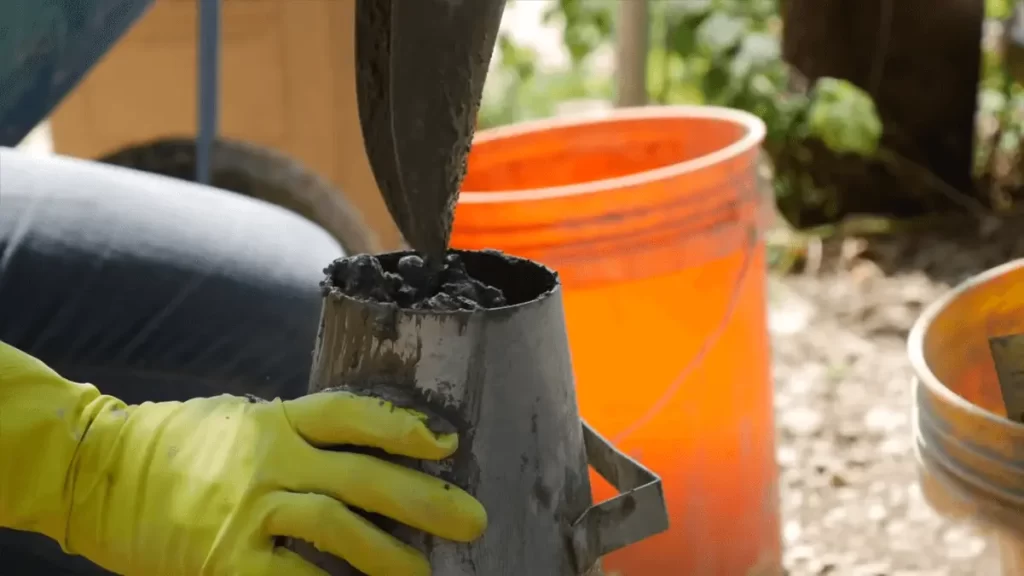

What Is Concrete Testing in Construction?
Concrete serves as the wrench of any construction and creates strength and durability for the skeleton of buildings, bridges, roads and other structures. However, how do engineers and contractors verify that the concrete satisfy the safety and quality measures? This is where concrete testing in construction comes to the picture. Concrete testing comprises of a set of formulated procedures for determining the quality, strength and durability of concrete. Through a number of tests, engineers are able to determine whether the concrete mix is appropriate for the application to be undertaken, thereby reducing risks and strengthening structures.
It will be no exaggeration to say that the importance of concrete testing in construction is paramount, because structures can last longer and are much safer which incorporates practical measures to protect the public. Construction professionals are able to pinpoint specific vulnerabilities to a building or structure so that necessary adjustments can be implemented in order to minimize expensive repair costs or ridiculously preventable damage.
The Importance of Concrete Testing in Construction
The necessity of high-quality concrete stems from the need to prevent structural failures, reduce maintenance costs, and extend the lifespan of concrete buildings. Moreover, construction concrete testing and evaluation is important to ensure that the concrete mix design is as per the set quality standards, and that it fulfills the intended purpose. If no proper examination is undertaken, the reliability of the structure can become prone to risk and lead to serious danger and loss of money. Testing concrete in construction projects also ensures safety compliance.
Most construction projects need to satisfy specific safety measures and building codes. Concrete testing ensures compliance, which minimizes the probability of weak or defective structures. Moreover, it assists in checking the durability and strength of the concrete, making sure that it is capable of enduring the impacts of variable environmental conditions, ranging from extreme weather, chemical exposure, to heavy loads. Proper testing guarantees not only the safety of the structures, but leads to reduced costs of maintenance and repairs in the long term.
Categories of Concrete Testing in Construction
Concrete testing in construction is divided into fresh concrete testing and hardened concrete testing. Fresh concrete testing is done before the concrete has set and is necessary to ensure that the concrete is workable and uniform. One example of a fresh concrete test is the slump test, which determines the flowability of the concrete. This test involves filling a circular, hollow cone with concrete, then lifting the cone so that the concrete can slouch under its own weight. The height at which the concrete slumps indicate its workability.
A very large slump indicates that there is some excessive water, which is detrimental to the structure. Another important test for fresh concrete is the air content test, which measures the volume of air within the concrete mixture. Having the proper air content is especially important in high freeze-thaw cycle areas in order to minimize cracking and maximally improve longevity. There are also temperature tests conducted to determine whether or not the concrete is at an appropriate temperature for hydration and strength development. There are problematic ranges if the concrete is too hot, or too cold, it will not cure properly leading to weakened structures. In the case of hardened concrete, testing is performed after the concrete has set and cured. The most common hardened concrete test is the compressive strength test, which assesses the strength of the concrete in terms of the load it can bear.
In this test, cylindrical or cube-shaped concrete samples are subjected to compaction, wherein they are placed under a compression machine and crushed in order to quantify their strength. The flexural strength test is another important test which focuses on bending resistance as a measure of performance, especially for beams and pavements. Other tests such as the permeability test determine the ease with which water and other chemicals can pass through the concrete, allowing for an estimation of the concrete’s resistance to moisture and corrosion. The rebound hammer test is a non-destructive test, which determined the concrete’s surface hardness and subsequently the concrete’s strength.
Guidelines for Testing Concrete in Construction
For accuracy and reliability, construction concrete testing needs to observe strict industry standards. There are guidelines issued by AWS, in other parts of the world, that regulate the different procedures of testing. Among the constituents of concrete is cement which has been used since ancient times, and the basis of its utilization was known long ago, ASTM International is the most reputable institute that is known all over the world as an authority that concrete testing is conducted as per international standards.
The British Standards European Norms BS EN is well-known testing concrete standard in Europe. The American Concrete Institute “ACI” is another important institution which offers practices and methods for the construction of the test concrete. In other countries such as India, the Bureau of Indian Standards IS controls the testing of concrete so that appropriate structure regulations are not breached. Standards assists the achievement of constructive uniformity, imperative for all construction scenarios in projects to guarantee that each tested concrete satisfies the needed parameters for strength, durability and safety.
Common Issues Found in Concrete Testing
The quality of concrete in construction operations could be affected by very many problems, even when thorough testing has been performed. One of the most frequent problems is low compressive strength, which can arise from too much water in the mix, insufficient curing, or not using appropriate quality materials. In case the compressive strength level is lower than anticipated, the stiffness of the structure is critically reduced, and it will not be safe for use. Huge quantity of air is another problem that can decrease the strength of concrete and render it incapable of carrying any additional load. Excess air in the mix causes the formation of voids which may make it easy for the structure to crack when subjected to loading. Cracking is a major concern in concrete construction and may arise from shrinkage, environmental conditions, and even the proportions of the mixture. When cracks develop in concrete, moisture can penetrate through them, rusting the reinforcing steel which eventually leads to failure of the structure.
Also Read: How to use GIS for Construction?
Another usual problem is low workability, which negatively impacts the placement and finishing activities of the concrete work. If either of the two extremes, that is, too dry or too wet concrete, is used, there would be failure in achieving the desired compaction, and this ultimately results in the structure being weak. These problems could be avoided through rigor testing and inspection of the concrete in its works so that any difficulties that may arise from this may be taken care of before it becomes critical. These challenges can be reduced by adopting reasonable mix design changes, curing methods, and conforming to the specified quantitative limits and quality control practices.
Conclusion
As it relates to construction activities, testing concrete in construction for strength, durability, and safety is of utmost importance. Engineers verify that the concrete mix is compliant with the required criteria by carrying out fresh and hardened concrete tests, and is thus deemed to be of satisfactory quality. Not having a defined procedure for testing poses monumental risk on construction projects in the form of undesired structural collapse; unplanned excessive expenditure on upkeep, and unsafe working conditions.
How to use GIS for Construction?
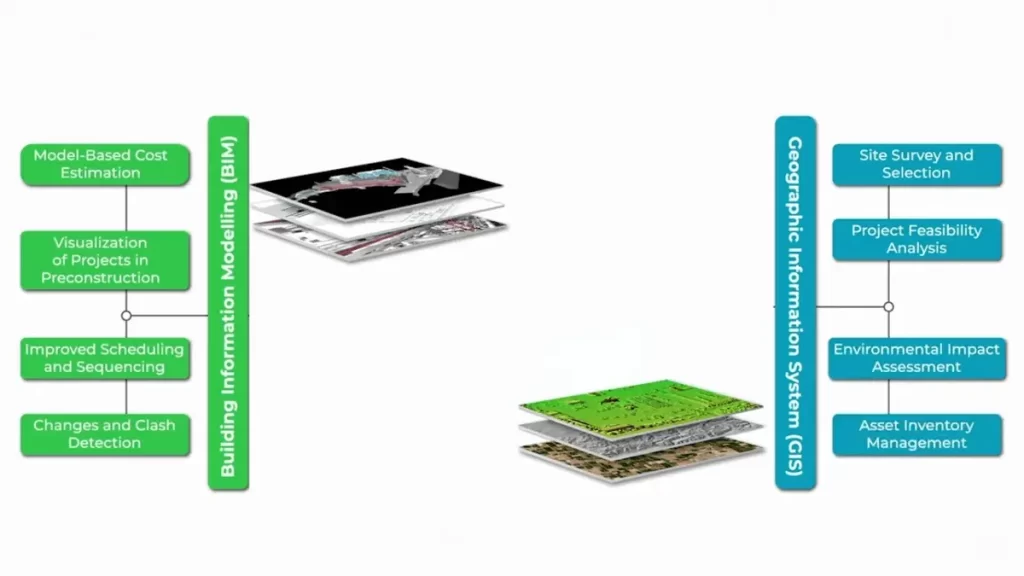

How to use GIS for Construction
Geographic Information Systems has transformed the construction sector through enhanced planning, execution, and management. With the integration of spatial data, construction firms are able to improve decision-making processes, lower expenses, and improve workflows. In a rapid construction setting, accurate and real time data is essential for successful project completion. GIS assists construction professionals to see and analyze spatial information throughout the entire project lifecycle. Efficient use of GIS in construction ensures project efficiency and sustainability from site selection, through execution, and up to project maintenance.
Using GIS Technology for Construction Purposes
The geographic information system provides helpful geographic information which enables construction specialists to make precise decisions. Companies can better manage a project’s success by mapping the design of the land, considering environmental aspects, and spatially representing the already existing infrastructures. Furthermore, GIS’s ability to examine zoning regulations, topography, and utility servicing makes it a critical component of contemporary construction work.
Advantages of GIS Technology in Construction Activities
Various construction activities benefit from different advantages offered by GIS Technology. Site selection is one of the most crucial benefits. Construction firms are able to study ecological, accessibility, and even land use impacts before the project site is determined which makes the site meet all conditions while diminish chances of complications. Furthermore, there is improved project planning as another advantage. The integration of Geographic data in real-time increases terrain and weather associated risks’ planning which is hugely beneficial. These risks can therefore be addressed proactively before they alter the construction process.
Another benefit of GIS systems is their contribution to resource management. Construction companies can monitor the position of materials, labor, and machinery, which ensures that every work unit is functioning efficiently and effectively. This saves resources and also prevents resource shortfalls from causing project delays. Moreover, GIS contributes to risk assessment. Construction companies can analyze flood zones, earthquake-sensitive regions, and other dangers to devise methods to shield a project from associated risks. GIS has the added advantage of accurately mapping infrastructure and utility components such as transportation networks and drainage systems. This minimizes mistakes that may be expensive to rectify and maximizes the integration of existing infrastructure.
Using GIS for Construction Planning
The application of GIS technology for construction planning is best illustrated with a step by step approach. Step one is data collection, which refers to the process of obtaining spatial information for mapping purposes through satellite images, surveys, and drone flights to build a project database. This data is used to establish the basis for all future plans and decisions. After gathering data, a site analysis is done. The GIS program assists in evaluating soil type, topography, and zoning regulations to decide if construction is possible. This analysis guarantees that the site selected is not only available for the proposed development, but also meets legally defined requirements.
Planning for construction entails the elements of design and modeling, which are fundamental parts of GIS. The integration of GIS into CAD and BIM software allows construction experts to build realistic 3D models of the project. These models serve as replicas of the construction site enabling informed decisions to be made for the design, structure, and arrangement of the site. Another notable area where GIS comes in handy is logistics and resource allocation. Construction companies can improve workflow and effectiveness by planning transportation routes, coordinating material deliveries, and managing workforce distribution. Finally, GIS is essential in monitoring and maintenance. After the construction projects are done, maintenance, infrastructure updates, and asset management can be tracked with ease using GIS. This helps ensure that the built facilities remain in good condition over time.
Negative Effects of GIS Fraud on Construction Firms
Most construction companies fail terribly to incorporate GIS software within their operations due to lack of information, would be willing to resort to illegal means as oppose to acquiring an acceptable solution to the problem. To cover their GIS fraud, they might “create” fake boundaries to alter property records, terming them as mapped, implemented a boundary verification so they appear to have implemented boundary marking or erected fence boundaries.
They might even go to the extent of creating fake attributes and updating property records where a record could associate a map, and mark an attribute as a property owner’s name. These illegal practices can only be curbed by GIS vendors producing software that is equipped with “security features” which require a unique identifier that will restrict some actions such as casting blobs or dummy marks on entries. Constructing a mapping system is one simple and effective way to eliminate or minimize fraud. The construction system GIS fraud and abuse by integrating datasets on ownership of building, property, mapping, attributes, and civil society.
You will Love to Read: What Is a Revision in Construction Submittals?
GIS technology is essential in making construction sites safer. By identifying risk factors and safety threats, organizations are able to take precautionary actions that protect people and machinery. As a result, accidents as well as injuries are less likely to happen. Furthermore, GIS offers assistance in the area of disaster management by monitoring real-time weather, natural catastrophes, and even emergency response methods. This data helps construction companies plan for unforeseen situations and minimize damages.
Conclusion
Knowing how to apply GIS to the construction area can radically change the management of the project and the decisions that need to be made while performing the tasks. Throughout the planning, implementation, as well as maintenance phases of a project, companies are able to make better use of financial resources, lessen risks, and successfully complete their construction projects. It is certain that GIS will remain a leading weapon for achieving technological breakthroughs as well as for providing societal benefits in the construction sector.
With its soaring capabilities in improving the selection of sites, project planning, effective resource allocation, and construction safety, modern construction companies now find GIS to be an invaluable technology. The use of GIS is expected to contribute to improved efficiency, cost-savings, and enhanced project delivery in the construction business. The future of construction will depend on data-based decision support tools, and that shift is led by GIS.
What Is a Revision in Construction Submittals?
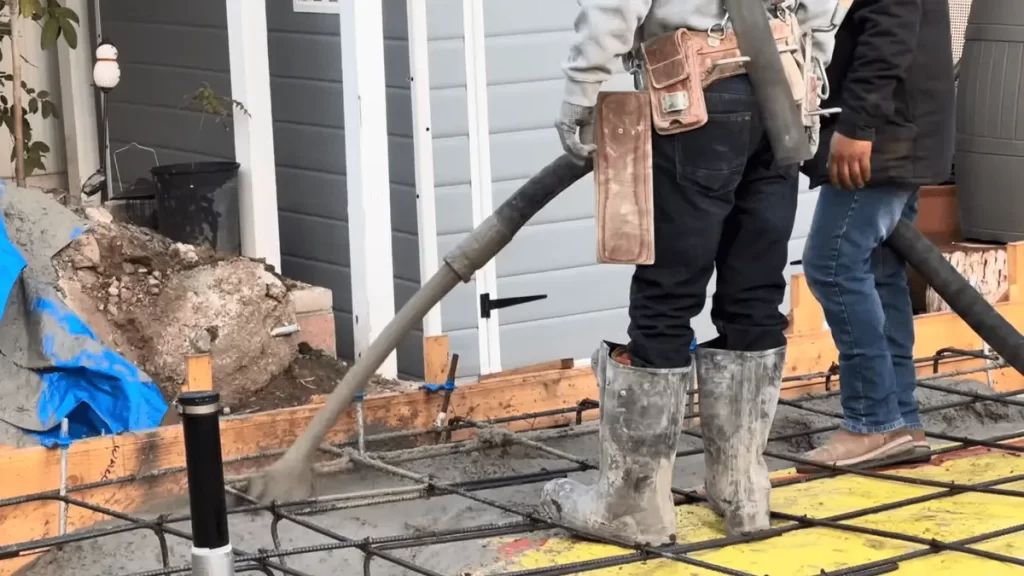

What is A Revision in Construction Submittals?
There are different types of activities that are associated with construction projects. Contractors, architects, engineers, and project managers are just some of the people who play different roles in construction. One step of this whole process is construction submittals that function as a formal record to show that there are materials, equipment, and designs that are in the project for consideration before work commences.
Different submissions may have different outcomes and some documents are more likely to require additional amendments. This leads us to ponder: what is a revision in construction submittals? The revision of construction submittals is best defined as the action of amending construction documentation in response to a particular requirement, mistake, or in order to adjust it according to what the reviewers have said.
Explaining Construction Submittals Revision Process
Revision in construction submittals is central to any construction submittals. Thus, it is pertinent to highlight the key components first. Submittals comprise such documents as shop drawings, product data, material samples, and mock-ups which contractors send for approval before acquiring any installations. Herein lies the challenge: the documents must ensure compliance with the design, building codes, and safety regulations all at once.
What Is Revision in Construction Submittals And Why Is It Important?
When details are found to be lacking, non-compliance is detected, or changes to the project need to be made a revision in construction submittals is often the final solution. Having a default, the process guarantees that all representatives possess the latest, and most accurate details.
Common Reasons for Submittal Revisions
There are different types of submittal revisions, and each serves a different purpose. There is a common practice of revising the originally submitted materials to bring them to the company standard. One of the practices is to ensure that the established building codes and safety measures are followed while submitting the materials. The most basic reason for the submission revision along these lines is the default ‘noncompliance’ submission revision. When a product, material or even a design which is to be executed is a submitted for approval but does not meet the requirements spelled out in the contract documents or is in violation of them.
The review process also uncovers discrepancies, in the dimensional values, material value grade, or even to the aspects of performance standards. All of these discrepancies make it obligatory for a revised submission to be approved. Errors or omissions, often classified as another reason, is wherein greater substantiation is needed in the recorded details provided along with the submission.
How Submittal Revisions Are Managed
Managing submittal revisions requires a level of organization in other aspects, such as project execution planning. The submittal revision process outline includes but is not limited to the following:
1. Identifying the Need for Revision
Once a contractor makes a submittal and that submittal is put through review, certain identified aspects which require further detailing which have been roughly settled need additional specification and these deficiencies noted need to be addressed before they are put through final approval. The reader, rather than going through the entire document, expects the contractor to make these amendments.
2. Keeping Track Of Revisions
In order to prevent lack of clarity and miscommunications, submittals that are revised must be provided specific revision letters or numbers. This aids in differentiating and identifying stakeholders’ documents, ensuring the most accurate and approved version is utilized in construction processes.
3. Approval Resubmission
After all the changes have been made, the contract is then obliged to resubmit the newly revised documents to the reviewing authority. During this stage, the submission will be checked again, to ascertain whether it’s met the standards and other requisites of the particular project.
4. Final Approval
When the modified documents are approved, the contractor is free to proceed to buy the materials and carry on with the installation, knowing rest assured that the materials will meet the set demands of the project.
Tracking what defines a revision in construction submittals is an essential step to take in ensuring project delays are kept to a minimum, and quality levels are maintained.
Difficulties in Dealing with Submittal Modifications
Changes to submissions must be performed, but they often pose problems. A few examples include:
1. Extensions To The Duration Of The Project
Revisions that need to be performed quite often tend to take up precious time, especially if multiple reviews and re-submits for approval are required. Difficulties such as these can limit scheduling and procurement of materials.
2. Faulty Communication
Upon contracting, many engineers and project managers tend to not fully communicate the changes that need to be made, resulting issues in document revisions. To eliminate repeating mistakes, documentation and communication must be implemented.
3. Absence of a System
Managing a number of submittal revisions can become troublesome without a tracking tool, resulting in confusion and errors. Project management software can simplify this task.
Knowing what a revision in construction submittals is and employing the best practices can greatly help mitigate these issues.
Read More: What Are Clamps Used for in Construction?
Most Efficient Methods of Handling Submittal Modifications
In order to effectively manage the edits to the workings of the project, construction teams need to implement the following recommendations in submittal revisions.
1. Define a Review Process
The presence of an established submittal review and approval workflow aids in limiting revisions as well as clarifying responsibilities to stakeholders.
2. Implement Digital Submittal Management Systems
New construction management software has features that facilitate the tracking, sharing, and updating of submittals, thus lowering the amount of paperwork needed and mistakes made.
3. Enhance Communication
Open lines of communication between contractors and architects or engineers helps to bring up issues that need to be addressed before they excessively revise submittals.
Every construction project must go through control steps to safeguard quality assurance and compliance norms – understand what a revision in construction submittals means. Revisions are known to arouse submittal changes, which are alterations of documents mulled over after mistakes, designs, materials, or regulations set forth are changed. Proper management of these revisions include documentation, communication, and the ability to effectively use updated technology to track changes.
What Are Clamps Used for in Construction?
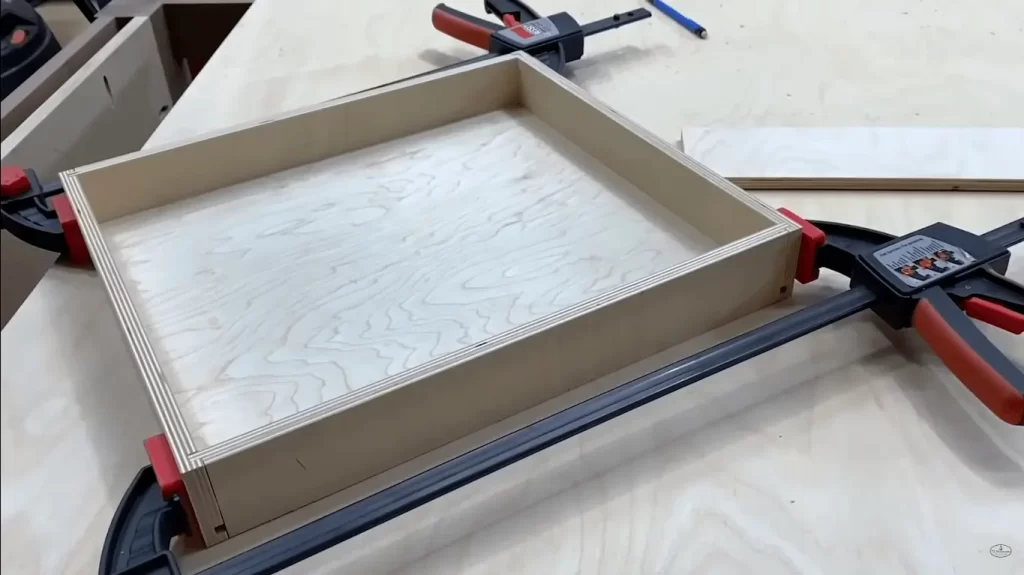

What Are Clamps Used for in Construction?
Clamps are special types of equipment that are needed in building activities as they serve the function of holding materials, positioning workpieces, and even fastening objectives with high precision to a workpiece in different stages of the building process. They help the workers in maintaining stillness, stability, and accuracy during the processes of cutting, drilling, welding, or assembling a structure. Lack of clamps means that materials could movement and/or misalignment which would make joints defective, weaken a structure and increase time spend on labor.
Uses of Clamps in Construction
1. Volume Adjusting and Material Sausage
One of the key functions of clamps is material fixation in construction and remodeling. Clamps are essential to the working process involving cutting, drilling, welding, and building structures since they serve the purpose of securing the materials to be worked on so they do not move. A perfect case is in woodworking, where clamps hold two boards together as glue is drying to keep them in the correct position precisely. Furthermore, they are used as sleeves for metal parts to be welded and even bolted.
2. Supporting Concrete Formwork
In concrete fabrication, clamps are employed to hold formwork in position. These molds are built to specific dimensions and geometry, and thus may require clamps to assist with the proper forming of concrete structures. This allows the formwork to be clamped to the right geometry, allowing the concrete to set while preventing any leaking. With proper quality control, the resulting structures will have a smooth outer surface with defects significantly reduced.
3. Assisting in Pipe and Plumbing Work
Clamps are also extensively used in the installation of plumbing pipes by making sure that the pipes or installation fittings are fastened or welded properly. Pipe clamps, for instance, keep pipes in place during the attachment of fittings to ensure that the pipes do not rotate and make the joint weak. This helps during construction activities on site where pipes have to be installed.
4. Ensuring Safety on Job Sites
Safety is one of the most important concerns in construction, and clamps are needed as much as in other tools in order to avert hazards. While working at elevated positions or lifting heavy objects, a clamp will hold a work piece, thereby minimizing the chances of it slipping out of the operator’s hand. In scaffolding, for instance, clamps help keep pipes and metal rods in the right position so as to enable the workers to use the scaffolding safely.
5. Binding and Joining Help
While clamps greatly assist in the framing and structural assembly of modern-day buildings, they also aid in holding beams and joists in place right before they are locked into position securely. Ensuring proper alignment and balance of the different parts as well as making certain that weak joints do not form which can cause a great problem in terms of a building’s stability.
6. Both Fixing and Aligning Indefinitely
When components are being bound together with screws, nails, or adhesive, clamps are ideal for holding the components together, as they firmly keep the components in place to prevent any movement that may cause construction errors. This is highly effective in large scale projects where precise alignment usually creates problems if the components are poorly fixed in position.
Different Clamps, Their Uses & Function in Construction
Aspects such as stability, support, and accuracy are paramount when constructing, and hence several types of clamps are employed based on their specific tasks. One of the most known types is the C-clamps or G clamps that are used for holding wood or metal pieces firmly before executing the cutting, welding, or even gluing processes. Bar clamps are perfect for clamping larger workpieces such as wooden beams since they can hold large objects with strong grips. Application of spring clamps is suitable for quick and easy-to-do tasks due to it being lightweight and easy to use.
Pipe clamps are an industry favorite when it comes to plumbing and metalworking since they serve to align and stabilize the pipes before placing the final connections. Scaffolding clamps are critical in ensuring the safety of construction workers as they serve to hold scaffolding metal bars and pipes, providing stable platforms for the workers. Moreover, formwork clamps work to hold concrete molds in place to fill the concrete in without leaks. When it comes to form work, every type of clamp serves a unique purpose which when executed with efficiency accuracy and safety ensures efficiency on site.
The Most Important Tool in The Construction
Clamps are some of the most important tools in construction. They assist in the holding, support, and stabilizing of materials in the different phases of construction work. Whether used in the holding of wooden boards, the alignment of metallic parts, the fastening of scaffolds, the assisting of plumbing, clamps are a valuable help in the work site. The misalignment and other weaknesses that may cause structures to be subjected to unsafe scour would be opened if there are no clamps.
The efficiency with which the work is done skyrockets due to the unparalleled functions of clamps. There are jobs as simple as woodworking that require precision and detail as well as accuracy, and a steady hand used along with appropriate clamps improves the overall quality of the structure built. It is very important to always choose the correct clamp for each job since these vary in strength, adjustability, and grip. With the correct choice, a lot of labor time is saved. Clamps are truly one of the best tools in the construction industry.
Moreover, new forms of clamps are being developed to adapt to modern requirements as the construction industry continues to advance in technology. New materials and designs provide adjustable, strong, and easy to use clamps that make construction site productivity and ease-of-use better than before. Clamps, which are fundamental towards ensuring the safety and success of construction work, are still vital tools even in modern temporary holding, permanent fixing, or precision aligning. With proper techniques, strong, durable, and professional-quality constructions can be achieved through the correct use of high-quality clamps.
You May Find This Interesting: Can Nevada become a Construction Base?
Can Nevada become a Construction Base?


Can Nevada become a Construction Base?
With its vast desert regions, thriving cities, and favorable business climate, Nevada is emerging as a prime destination for different sectors, including construction. But can Nevada serve as a construction base? It depends on various criteria such as economic activity within the state, the availability of a labor market, how developed the state’s infrastructure is, the weather, and legal framework. While Nevada presents numerous benefits for the establishment of construction businesses, it also poses some serious challenges.
Growth in Economic Activity and Increased Need for Construction Services
With the booming economy fueled by tourism, entertainment and hospitality industries, Nevada has been performing exceptionally well, especially in places like Las Vegas, Henderson, and Reno. These areas constantly require newer hotels, building casinos, and improving the infrastructure. Along with that, Nevada has also seen an influx in population which directly correlates to the demand for residential homes, commercial offices, and public facilities.
The increasing activity in the construction industry in Northern Nevada, especially in the Reno-Sparks area, is also fueled by the growth of manufacturing and technology industries in the area. The presence of companies like Tesla, Amazon, and Google in the region has also increased the level of industrial construction activity. This economic development is what makes Nevada an attractive region for construction companies looking for consistent work.
Attractive Tax Policies and Low Business Costs
This lack of business taxes makes Nevada an even more appealing option for construction companies seeking to make more money. As a bonus, this state has less bureaucracy compared to places such as California, which helps businesses operate more freely.
In addition, the state government provides great support for new economic activities by offering incentives and lowering taxes on companies that invest in infrastructure and workforce development. Such policies help construction companies to easily set up and grow their business in the state.
Accessible Skilled Workers
Nevada’s expanding population also provides a sufficient pool of highly skilled workers for the construction industry. There are numerous trade schools and training institutions in the state that prepare people for careers in construction, engineering, and the skilled trades.
The persistent skill gap is very real, particularly in rapidly growing regions such as Reno and Vegas. With the demand for constructions growing, employers might have a hard time hiring highly qualified workers. In response, Nevada has poured funds in development programs and even partnered with trade unions to train more workers for the industry.
Infrastructure And Logistics
Additionally, Nevada has a developed highway and transportations system that makes it ideal for construction businesses. The state has interstate highways 15 and 80 which connect to California, Utah, and many other western states. This accommodates easy movement of construction materials and equipment.
Moreover, Nevada has well developed industrial parks and distribution centers which allow construction firms to procure materials from the region. The existence of major airports and rail roads also add to the state’s logistical benefits.
Climate And Environmental Considerations
Nevada’s desert climate has both pros and cons for construction. On the upside, the state has very low precipitation levels coupled with a dry climate which lessens the chances of weather-related construction delays. The state’s climate makes it one of the easiest states to do construction in compared to states with heavy snow or hurricanes. This is extremely beneficial for contractors.
During the warm months, construction workers face a multitude of obstacles, with extremely high temperatures being one of them. Employees working outside, especially in high temperatures, are at a greater risk of succumbing to heat related illnesses. To protect their employees, construction companies need to implement safety protocols such as providing hydration and shade stations, as well as adjusting the work schedules.
Another factor that has to be considered is the scarcity of water. It comes with no surprise that Nevada is one of the driest states in the US, and with water usage restrictions in place, construction projects that utilize large scale developments may be affected. Builders are required to come up with sustainable methods in order to follow the state rules and use water efficiently.
You May Love This Too: How Does Concrete Patch Dry?
Difficulties of Setting Up a Construction Project in Nevada
Even though Nevada has a lot to offer as a construction base, there are also obstacles that need to be taken into account prior to commencing operations. Perhaps the largest problem is the persistent lack of skilled labor in the construction sector. Even though there are efforts made with workforce training programs and trade schools, adapting a new skilled worker always poses threats of overstocking the market. Because of this imbalance, companies may need to increase their wages and benefits, or even hire from other states in order to satisfy project needs.
One of the most pressing problems includes the expensive land within city limits. Even though Nevada has a lot of land, the best spots located in Las Vegas and Reno are quite costly, leading to higher construction expenditures. For corporations which wish to set up operations in these regions, acquiring inexpensive land coupled with controlling budget on projects is challenging.
Of great concern are water limitations, as wood which Nevada is one of the most water scarce states. Several restrictions have to be accounted for that will prevent the wasting of water resources which can greatly influence the construction development of the site’s landscaping, or even the cooling systems of the buildings. Projects’ requirements are rigid, and so builds must incorporate innovative solutions and stringent methods so that the projects is accomplished sustainably without wasting a great amount of water.
Conclusion
What can be said about Nevada as a construction hub? The answer is yes, but additional considerations have to be kept in mind. The state has a growing economy and infrastructure, and is favorable for business, making it a good location for construction companies. Nevertheless, companies will have to deal with the labor deficit, severe weather, and environmental rules policies.
Companies willing to accept these constraints and challenges will find great opportunities in residential, commercial, and industrial construction in Nevada. It is also important to note that the state of Nevada as a whole is a prime location for business-centric policies and development, which makes it advantageous for construction activity.

